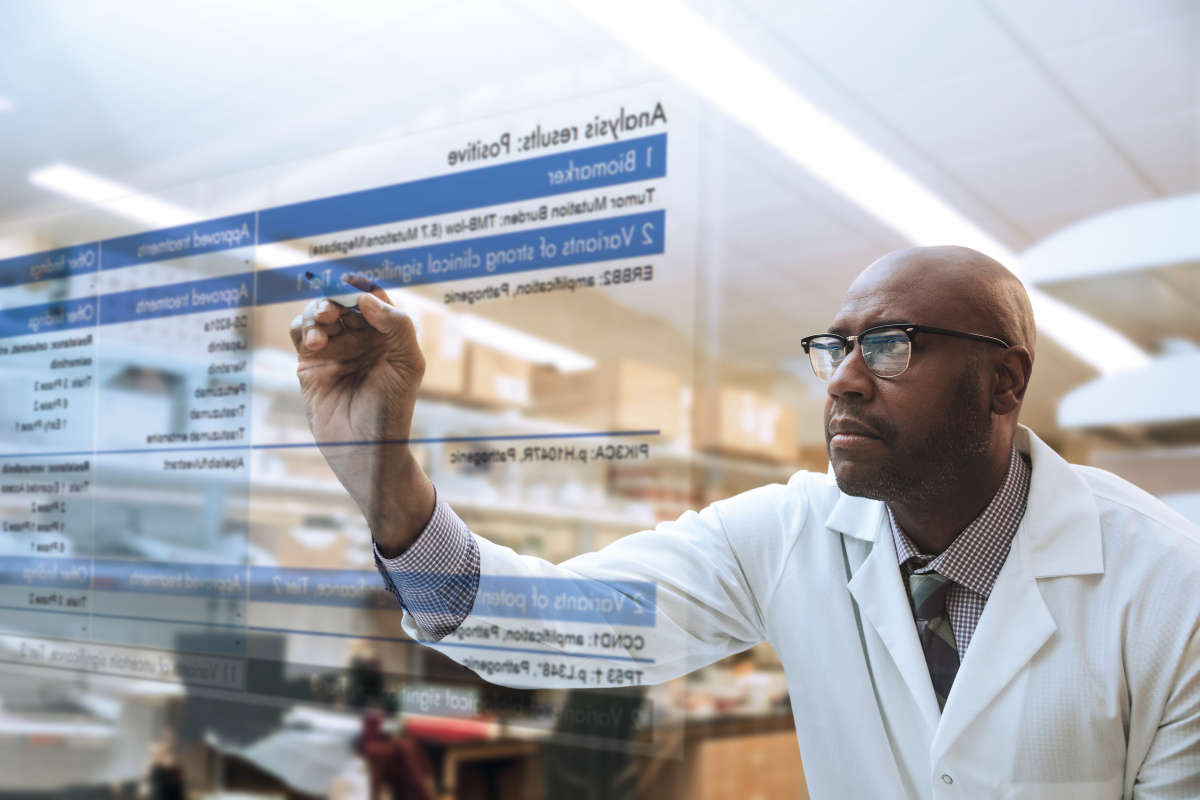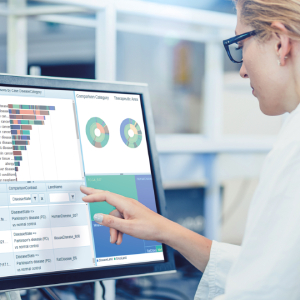














Check out this recent article by American Health Leader (AHL) on how QIAGEN is helping clinical diagnostic and pathology labs adopt genomics-guided precision medicine workflows.
Sean P. Scott, Chief Business Officer and Vice President of Clinical Market Development at QIAGEN, explains QIAGEN’s holistic approach to developing and expanding NGS-based test services. “No matter the size of the lab, we’re focused on helping them understand how to develop a more insightful and actionable report for the ordering physician . . .”
Read the full article here!
QCI Interpret makes precision medicine possible by offering one, cloud-based platform to handle a range of genomic testing, from somatic to germline, from small panels to exome and whole genome.
Get in touch with one of our QCI Interpret experts today!

If you answered yes, we invite you to watch a free recording of our webinar that addresses one of the key bottlenecks of today’s clinical testing laboratory: producing standardized interpretation that is consistent among personnel, reproducible within the testing community, and in accordance with professional guidelines. We show how our clinical NGS reporting and interpretation software, QCI Interpret, not only makes precision medicine possible, but simplifies workflows and increases productivity.
We are proud to share an article written by Ramon Felciano, Chief Technology Officer and Vice President, Strategy & Technology, QIAGEN Bioinformatics, that was featured in The Pathologist, a UK-based publication that considers the latest research and innovation in pathology and diagnostics. Titled “Deciding Factors,” the article shines a light on new trends in clinical labs that are improving the accuracy and efficiency of genetic test interpretation. It argues that these advances are made possible with clinical decision support (CDS) tools, which incorporate big data, sophisticated informatics, and augmented intelligence (as opposed to artificial intelligence), to better inform treatment decisions, manage liability risk, and ensure compliance with ever-changing data privacy regulations.
The adoption and implementation of CDS tools is no longer a luxury, but rather a necessity. Just a few years ago in the United States, only pre-eminent academic medical centers offered precision medicine. As stated in the article, “Today, an estimated 24 percent of hospitals will provide some form of precision medicine by the end of 2018.”(1) With the use of CDS tools and related technologies gaining traction, clinical teams need to ensure they select support tools that provide maximum interpretation transparency and detailed reporting. Dr. Felciano explains how CDS tools are personnel assets—not replacements—that enhance productivity, reliability and the practice of precision medicine.
(1)N. Versel, “Data requirements, money hold back growth of precision medicine among health systems” (2018). Available at: https://bit.ly/2qFSb60. Accessed April 18, 2018.
It’s exciting to see that NGS-related bioinformatics advances are having an impact in clinical labs. We’ve been following that trend closely — so we are glad to read some excellent coverage of the topic recently in the highly regarded magazine CAP Today. We recap two of the articles here, and if you’d like you should of course give each of them a full read.
In “3 new NGS Surveys on CAP 2016 PT Launchpad,” author Anne Paxton highlights the overwhelmingly positive response to the College of American Pathologists’ (CAP) first proficiency testing for NGS. Some 130 labs participated, a far cry from the 35 labs CAP originally anticipated. This success prompted the group to expand its proficiency testing challenge to include bioinformatics in 2016, focusing first on molecular oncology and the detection of somatic mutations. CAP also expects to issue bioinformatics-based challenges in 2017 for germline variation and genetic disorders. In the story, Karl Voelkerding, chair of the CAP project team, says that the complexity inherent in NGS bioinformatics created a multitude of opportunities to organize, interpret, and deliver data.
An article from William Check entitled “Next-gen sequencing settling in, making its mark” touches on the increasing likelihood of finding NGS technology in labs at large health systems and hospitals (due in part to faster rates of reimbursement), as well as the reluctance of some clinical pathologists to embrace the technology. According to Check, technologies such as the Human Genome Mutation Database enable a strong evidence base when combined with high clinical utility. Her story is a testament to the value bioinformatics can bring to the clinical setting, particularly when testing can cover up to 500 genes in a single panel. The data produced by such testing is unwieldy, and requires a comprehensive bioinformatics solution to help clinicians identify the disease-causing variants that might otherwise have been missed. The author points out that many pathologists lack in-depth genomics or genetics training, which often creates a daunting obstacle for broader adoption of NGS technologies. He closes his story with practical pointers for pathologists to minimize their risk of being marginalized in this industry, where NGS and bioinformatics are playing an ever-increasing role.
Our team has spent many years developing expertise in content curation and genomic data analysis, and now we’re using that foundation to help clinical labs make quicker work of their data interpretation. We look forward to seeing how innovative bioinformatics approaches can make NGS-based testing more robust and reliable in the coming years.
Learn about QIAGEN Clinical Insight.